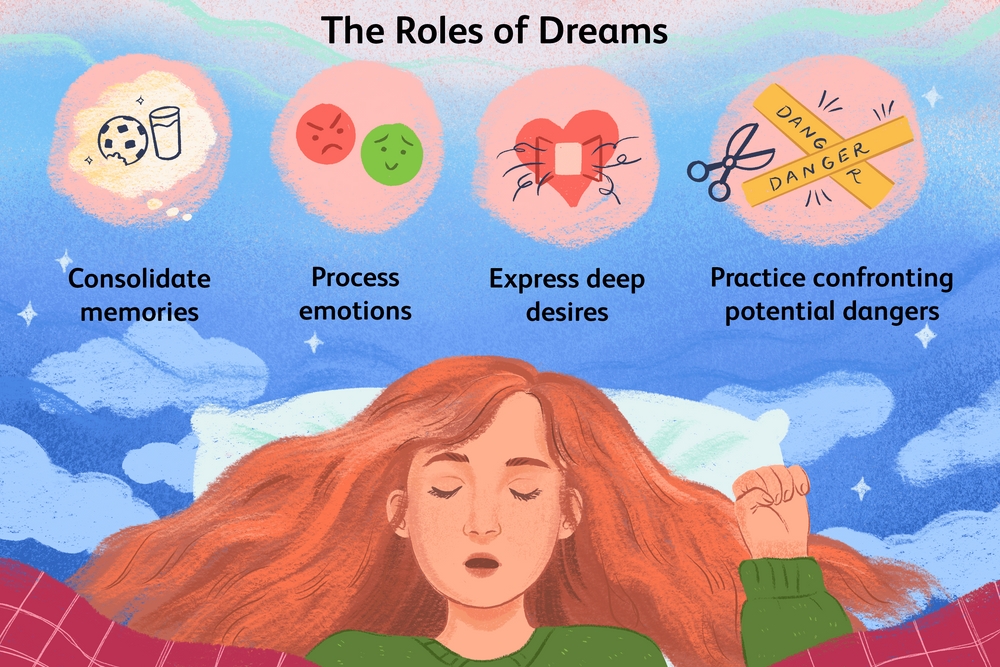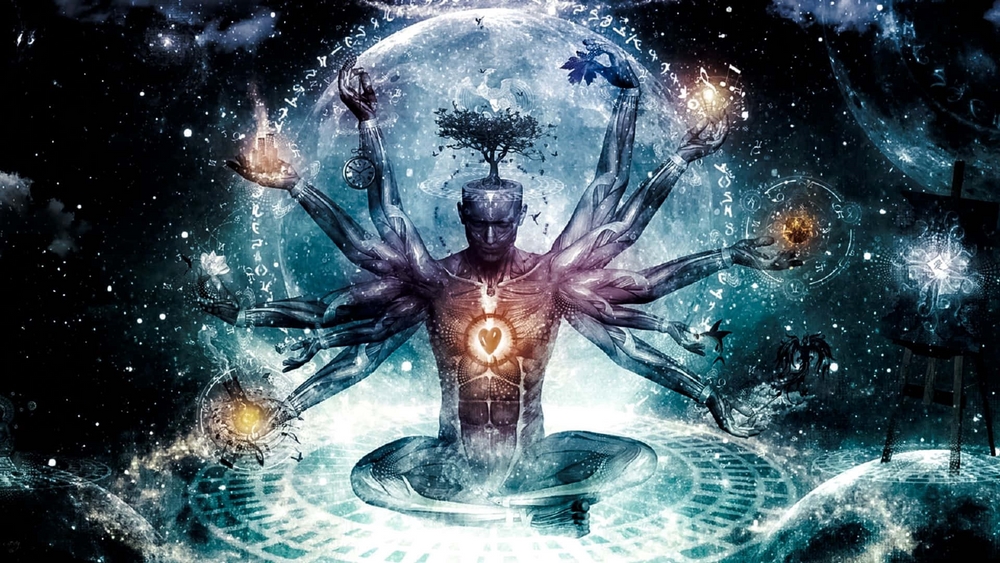
Throughout history, dreams have been viewed as significant windows into our inner world, reflecting our deepest fears, desires, and unspoken thoughts. This inquiry delves into the psychological and cultural interpretations of dreams, examining how they can be more than just random neural activities during sleep. By interpreting dreams, we can uncover insights into our emotional well-being, unresolved issues, and even potential future paths, making the understanding of dreams a valuable tool for self-discovery and personal growth.
The Science of Dreaming
The science of dreaming is a complex field that intersects neurology, psychology, and even philosophy. Scientific research into why and how we dream has revealed much about the mechanisms and purposes of dreams. By understanding the neurological processes behind dreaming and the psychological theories that explain why we dream, we can gain a better understanding of this fascinating aspect of human experience.
How and Why We Dream
Dreams occur primarily during the REM (Rapid Eye Movement) stage of sleep, characterized by increased brain activity. Theories on why we dream range from psychological processing and memory consolidation to emotional regulation. Some psychologists suggest that dreaming is a way for the mind to process emotions and experiences from the day, integrating and making sense of them. Others believe dreams play a crucial role in memory formation and problem-solving.
Moreover, dreams might also serve an evolutionary purpose. Some theories suggest that dreaming helps in rehearsing responses to potential threats, aiding in survival. This view aligns with the often vivid and emotional nature of dreams, which can simulate real-life scenarios and help in preparing the dreamer for similar situations in waking life.
Neurological Aspects of Dreams
Neurologically, dreaming is a result of complex brain activity. During REM sleep, the brain deactivates certain areas like the prefrontal cortex, which is responsible for logical thinking, while activating the limbic system, which deals with emotions. This shift might explain the often illogical, emotional nature of dreams.
Research using brain imaging technologies has shown that different parts of the brain are involved in dreaming. The amygdala, involved in processing emotions, is often active during dreaming, which could explain the intense emotions experienced in dreams. Furthermore, the hippocampus, key in memory formation, is also active, linking dreams to memory processing.
Understanding these neurological aspects of dreams provides insights into the connection between our dreams and our emotional and cognitive processes. It suggests that while dreams might sometimes appear random or nonsensical, they are in fact a reflection of the complex workings of the brain during sleep.
Psychological Interpretations of Dreams

Dreams have long been a subject of fascination in the field of psychology, offering a window into the subconscious mind. Various psychological theories and approaches have attempted to decode the meanings and purposes of dreams, each presenting a unique perspective. From the foundational theories of psychoanalysis to modern psychological interpretations, the study of dreams continues to reveal intriguing insights into the human psyche, emotions, and experiences.
Dreams in Psychoanalysis
In psychoanalysis, founded by Sigmund Freud, dreams are considered a pathway to understanding unconscious desires and conflicts. Freud believed that dreams are a form of wish fulfillment, where repressed desires and thoughts are symbolically represented. He emphasized the importance of dream symbols and their interpretation to uncover hidden emotions and conflicts residing in the unconscious mind.
Carl Jung, another pioneer in psychoanalysis, offered a different perspective. He viewed dreams as a means of communication between the conscious and unconscious minds, emphasizing the role of archetypes and collective unconscious. Jung believed that dreams could provide guidance for personal growth and self-realization, interpreting them as symbolic representations of the individual’s current psychological state and potential for development.
Modern Psychological Theories
Modern psychological theories have expanded upon and sometimes diverged from classical psychoanalytic interpretations. Cognitive psychologists view dreams as a reflection of cognitive processes, such as problem-solving and memory consolidation. They suggest that dreams might be a byproduct of the brain’s activity during sleep, involved in processing and organizing information gathered during waking hours.
Another modern theory is the Activation-Synthesis Model proposed by J. Allan Hobson and Robert McCarley. This model posits that dreams are the brain’s attempt to make sense of random neural activity during REM sleep. It emphasizes the physiological basis of dreaming, suggesting that dreams may not have specific meanings but are rather random interpretations of neural signals.
These varying psychological perspectives offer a multifaceted understanding of dreams, acknowledging their complexity and significance in understanding human cognition, emotion, and subconscious processes. Each theory provides valuable insights, contributing to a broader comprehension of why we dream and what our dreams might signify.
Cultural and Historical Views on Dreams

Dreams have been a subject of intrigue and interpretation throughout various cultures and historical periods, each offering unique perspectives and beliefs. The cultural and historical views on dreams reflect the diverse ways in which societies have understood and valued these mysterious nighttime experiences. By exploring these varied views, we gain insight into how dreams have been perceived and interpreted across different epochs and civilizations, revealing their significance in shaping human thought and culture.
Dreams in Different Cultures
Dreams hold different meanings and significance in various cultures. In many indigenous cultures, dreams are seen as messages from the spiritual world or as a means of divine communication. They are often considered integral to personal and communal decision-making processes. For instance, Native American tribes view dreams as a sacred source of wisdom and guidance, essential for spiritual and life journeys.
In Eastern philosophies, such as in Hinduism and Buddhism, dreams are often seen as reflections of one’s inner state and as tools for spiritual insight and growth. They are sometimes interpreted as manifestations of desires and attachments or as illusions that need to be transcended on the path to enlightenment.
Historical Examples of Significant Dreams
Historically, there have been many instances where dreams have played a significant role in decision-making, creativity, and discovery. In ancient Greece, dreams were considered as prophetic messages from the gods. The Greek god of dreams, Morpheus, symbolized their importance in conveying divine wisdom. Dreams were so revered that ancient Greeks even had temples dedicated to dreaming, where people would sleep in hopes of receiving divine insight.
In more recent history, dreams have influenced scientific and creative fields. For example, the chemist Friedrich August Kekulé claimed that the structure of the benzene molecule came to him in a dream, revolutionizing organic chemistry. Similarly, artists like Salvador Dalí drew inspiration from their dreams, using them to fuel their creative works. These examples underscore the impact that dreams have had across cultures and history, shaping not only personal and spiritual realms but also contributing significantly to scientific and artistic advancements.
Biblical Meaning of Dreams

Dreams hold a significant place in the Bible, often considered as divine messages or prophetic revelations. The interpretation of dreams in the biblical context is rich with symbolism and spiritual significance. Both the Old and New Testaments feature dreams as important elements in various narratives, serving as a means through which God communicates with individuals. Understanding the biblical perspective on dreams provides insights into their spiritual and prophetic dimensions in the Judeo-Christian tradition.
Dreams in the Old Testament
In the Old Testament, dreams are frequently seen as a method of divine communication. One of the most famous examples is Joseph’s dreams, which not only foretold his own future but also held significant implications for his entire family. Joseph’s ability to interpret dreams, like those of Pharaoh, which predicted famine in Egypt, further highlights the importance placed on dreams as divine messages.
Another notable instance is the dream of Jacob’s ladder, where Jacob dreams of a ladder reaching to heaven, symbolizing the connection between God and humanity. This dream carries profound theological implications, representing God’s promise and presence. Dreams in the Old Testament are often symbolic, requiring interpretation and are considered as an integral part of God’s guidance and plans.
Dreams in the New Testament
In the New Testament, dreams continue to play a significant role but with somewhat different emphasis. Dreams in the New Testament often serve as guidance or warnings. For instance, Joseph, the husband of Mary, receives a dream instructing him to marry her, despite her inexplicable pregnancy, indicating divine intervention and assurance.
Dreams are also used to provide warnings, such as those given to the wise men and to Pilate’s wife, regarding Jesus. These dreams serve as divine interventions, guiding actions and decisions in the unfolding narrative of Christ’s life and ministry. The New Testament’s approach to dreams underlines their importance in the divine plan, offering protection, guidance, and prophecy.
Dreams and Their Impact on Real Life

The impact of dreams on real life is a topic of great interest and study, bridging the gap between the subconscious and conscious experiences. Dreams can influence various aspects of our waking life, from decision-making processes to creative endeavors. Understanding how dreams affect and reflect our real-life situations can provide valuable insights into our psychological and emotional states, helping us navigate our daily lives more effectively.
Dreams and Decision Making
Dreams can play a significant role in decision-making processes. Often, they bring to light subconscious thoughts and feelings that might not be apparent in our conscious minds. For instance, a dream might reveal hidden anxieties, fears, or desires related to a decision we are facing. This subconscious input can sometimes help clarify our thoughts and guide us towards a decision that aligns more closely with our deeper values and needs.
Moreover, dreams can serve as a rehearsal space for different scenarios, allowing us to explore various outcomes and approaches in a safe, imaginative environment. The emotional responses and resolutions experienced in dreams can influence our waking decisions, providing insights that might not be readily available through conscious deliberation.
Dreams and Creativity
The relationship between dreams and creativity is well-documented and profound. Dreams can be a source of inspiration and novel ideas for artists, writers, musicians, and inventors. The unrestricted, boundless nature of dreams provides a rich soil for creative thought, often leading to innovative solutions and artistic expressions that might not occur in the structured environment of wakefulness.
Historically, many creative individuals have credited their dreams for major breakthroughs in their work. For instance, musicians have composed pieces, and scientists have solved complex problems, all inspired by their dreams. This phenomenon highlights the potential of dreams to tap into the deeper wells of creativity, bypassing the limitations of logical, conscious thought and accessing a more intuitive, imaginative realm.
Research and Theories of Dreams

The study and research of dreams have captivated scientists and psychologists for centuries, leading to various theories and interpretations. From early psychoanalytic views to modern neuroscientific approaches, the exploration of dreams has continually evolved, offering diverse perspectives on why we dream and what dreams might signify. Understanding these theories and studies provides a comprehensive view of how our understanding of dreams has developed over time and what current research suggests about the nature and purpose of dreaming.
Famous Dream Studies
Some of the most influential studies in the field of dream research have significantly shaped our understanding of dreams. Sigmund Freud’s work, particularly his book “The Interpretation of Dreams,” laid the foundation for psychoanalytic theories, suggesting that dreams are a manifestation of repressed desires and unconscious thoughts.
Another pivotal figure, Carl Jung, introduced the concept of the collective unconscious and archetypes, proposing that dreams are a way to communicate with the deeper parts of the psyche. His approach was more focused on the symbolic and spiritual aspects of dreams.
In the 1950s, the discovery of REM (Rapid Eye Movement) sleep by researchers Aserinsky and Kleitman opened new avenues for scientific study of dreams. This led to further research into the physiological processes involved in dreaming and how they relate to the psychological content of dreams.
Contemporary Theories of Dreaming
Contemporary theories of dreaming incorporate both psychological and neurobiological perspectives. The Activation-Synthesis Hypothesis, proposed by J. Allan Hobson and Robert McCarley, suggests that dreams result from the brain’s attempt to make sense of random neural activity during REM sleep. This theory emphasizes the role of brain chemistry and neural pathways in shaping dreams.
Cognitive theories of dreaming, on the other hand, view dreams as a reflection of our waking cognitive processes. These theories suggest that dreams are a way for the brain to process information, solve problems, and consolidate memories.
Additionally, contemporary research often focuses on the correlation between dreaming and emotional regulation. Studies suggest that dreaming plays a role in processing emotional experiences, helping to integrate and understand emotions in a safe, symbolic space. This line of research bridges the gap between neurobiological processes and the psychological content of dreams, offering a more holistic understanding of why we dream and the functions dreams may serve.








